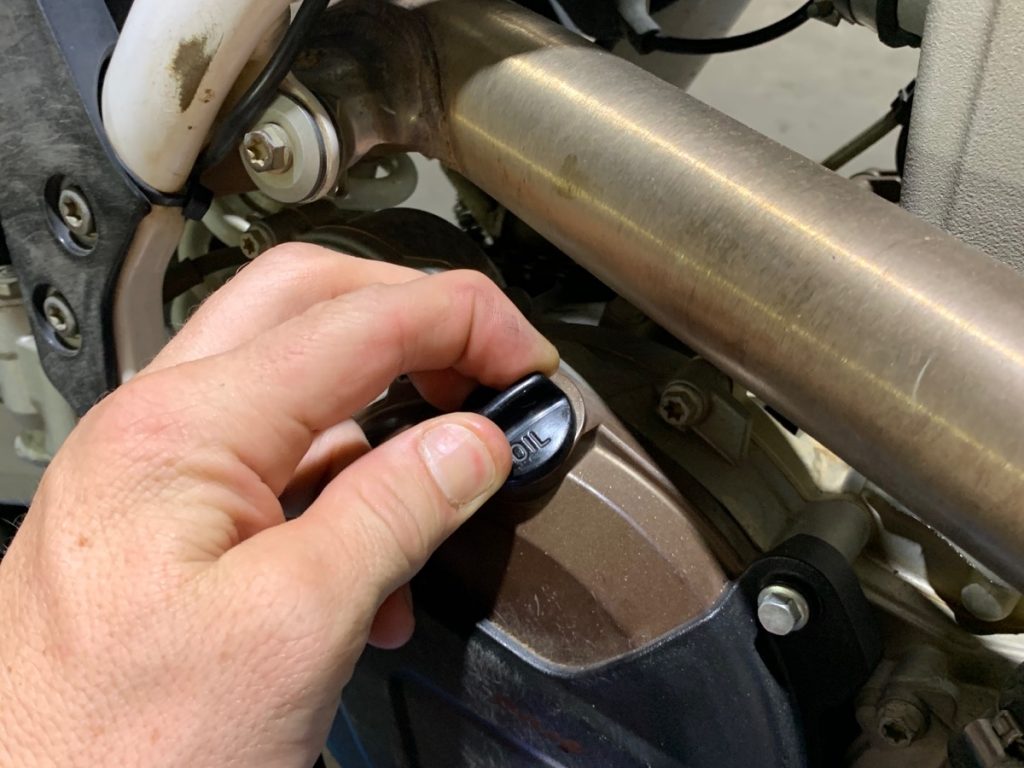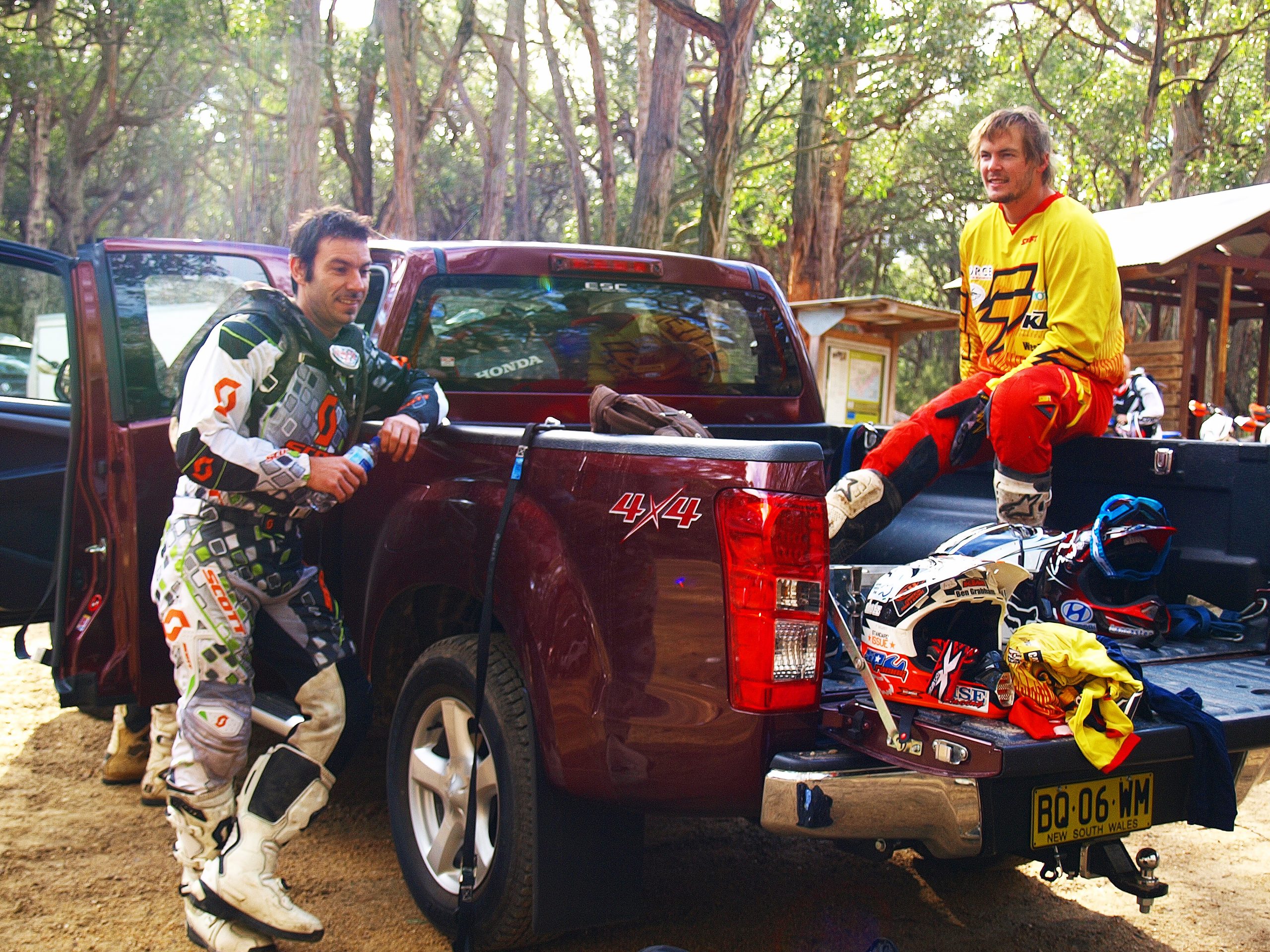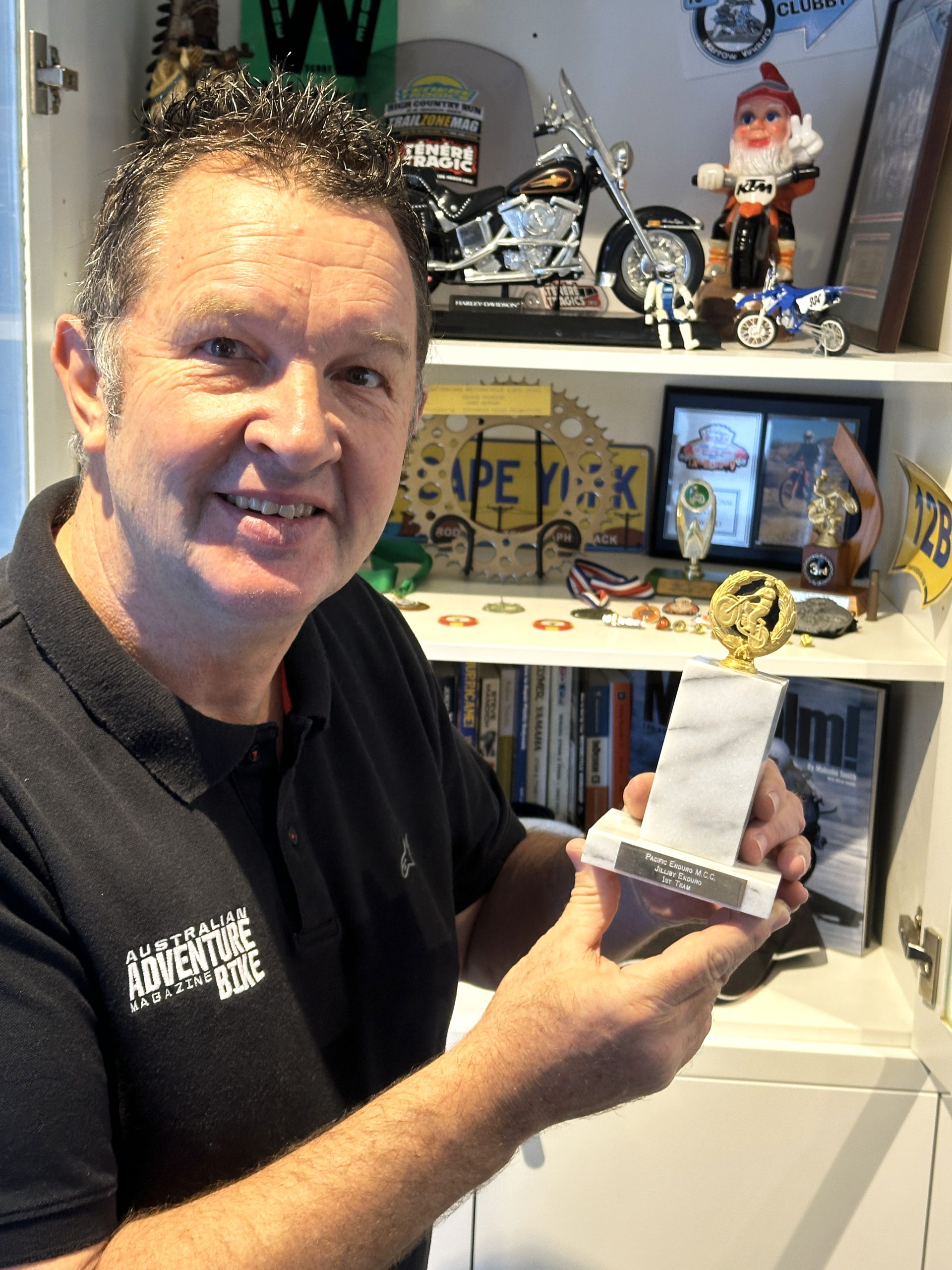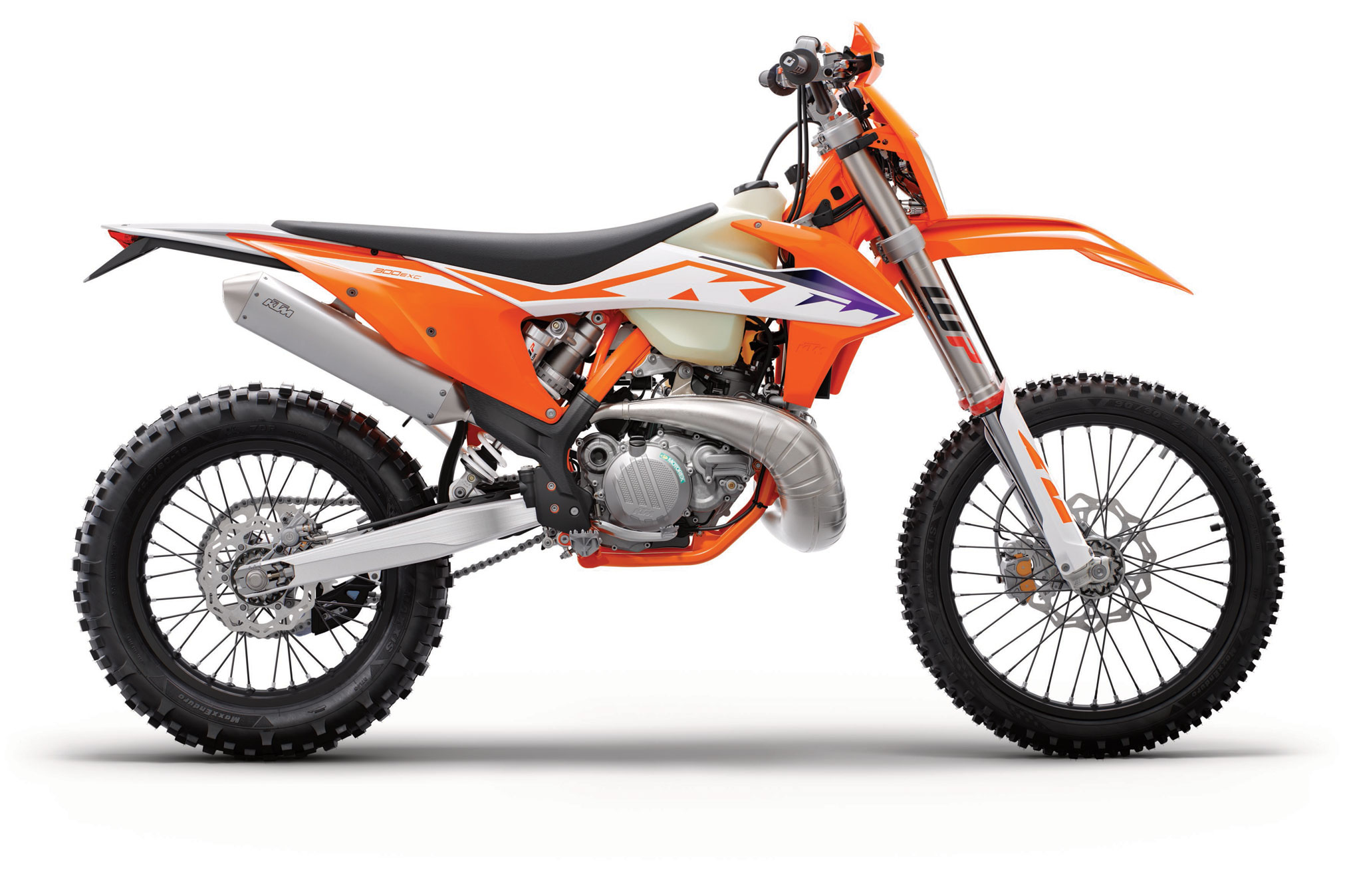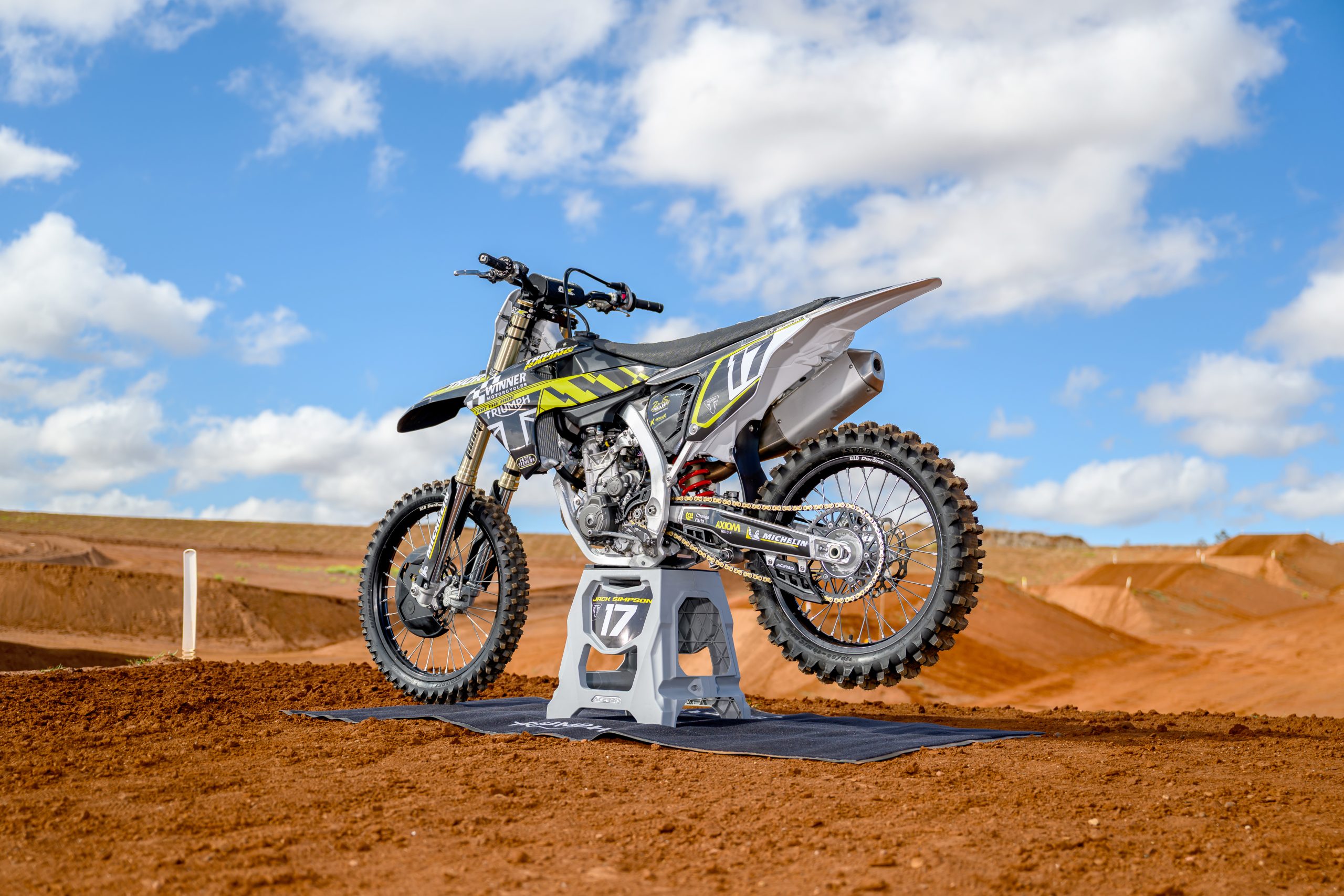The Husqvarna FE350 has a magnetic sump plug and an oil screen as well as an oil filter. There are also a few Allen-head plugs in the bottom of the engine that might look like sump plugs but aren’t and shouldn’t be removed.
For this reason, I have seen people make all kinds of mistakes when changing the oil on their 350s. The best one was a guy who removed the oil pump cover looking for a filter. For this reason we’ve decided to give you a run down on how to do the job properly.
1 HOIST AWAY
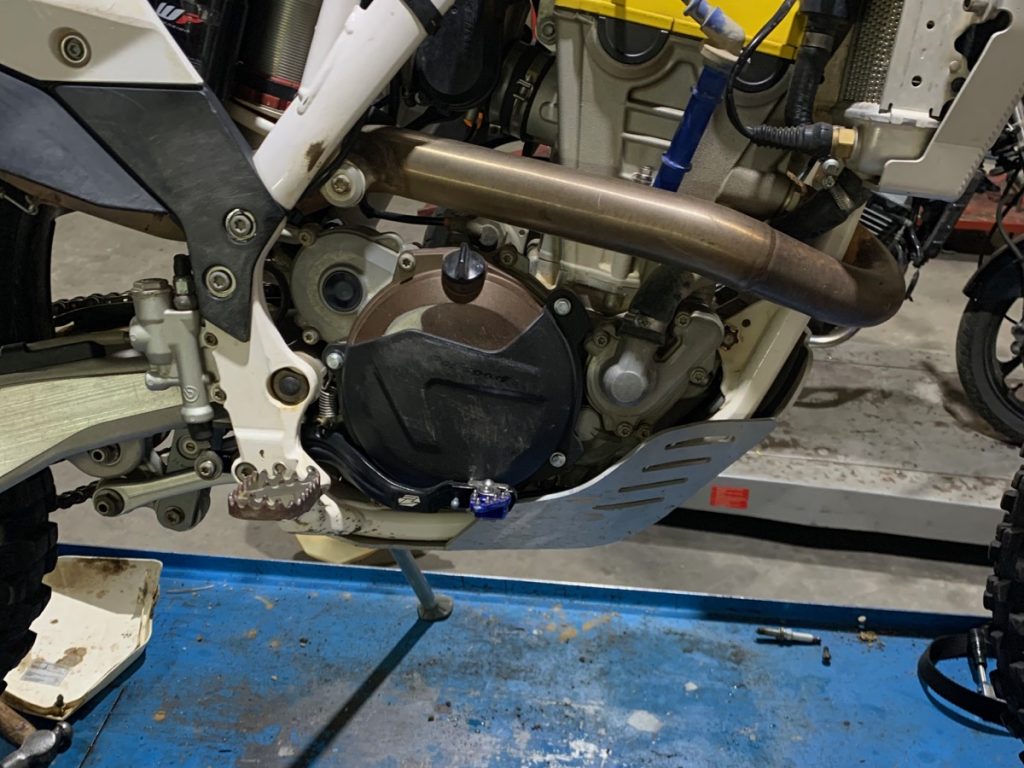
You will need full access to the bottom of the engine, so put the bike up on a hoist or use the sidestand, but make sure there is someone to hold the bike when you are loosening the bolts or you could end up covered in oil with a bike on top of you.
2 SKIDPLATE
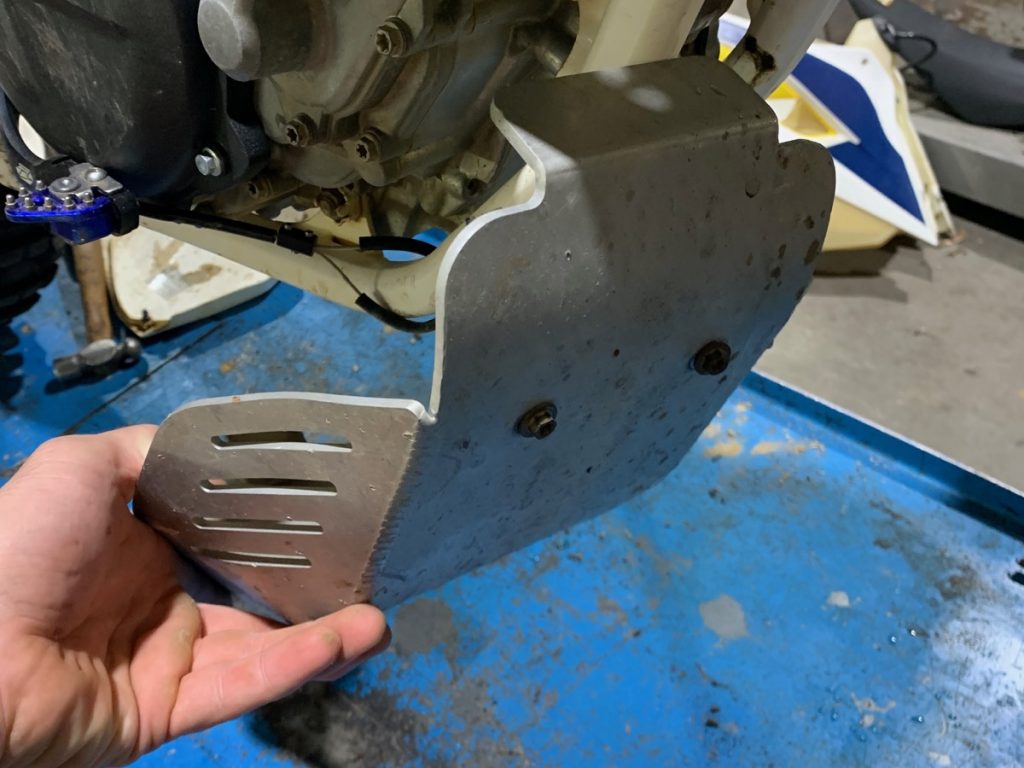
Remove the skidplate/bashplate so you have clear access to the sump plug. Some bashplates have cut outs for the plug but they always end up full of oil. For the sake of loosening a few extra bolts and two minutes work I prefer to remove the ’plate and give it a wash while I’m there anyway.
3 DRAIN TRAY

Place a drain tray under the bike and remove the sump plug from the rear of the engine. The plug is the 13mm hex head bolt with a copper washer fitted to it.
4 REMOVE SIDE PLUG

While the oil is draining out, take a 13mm socket and ratchet and remove the plug from the side of the engine behind the gearlever.
5 REMOVE SCREEN
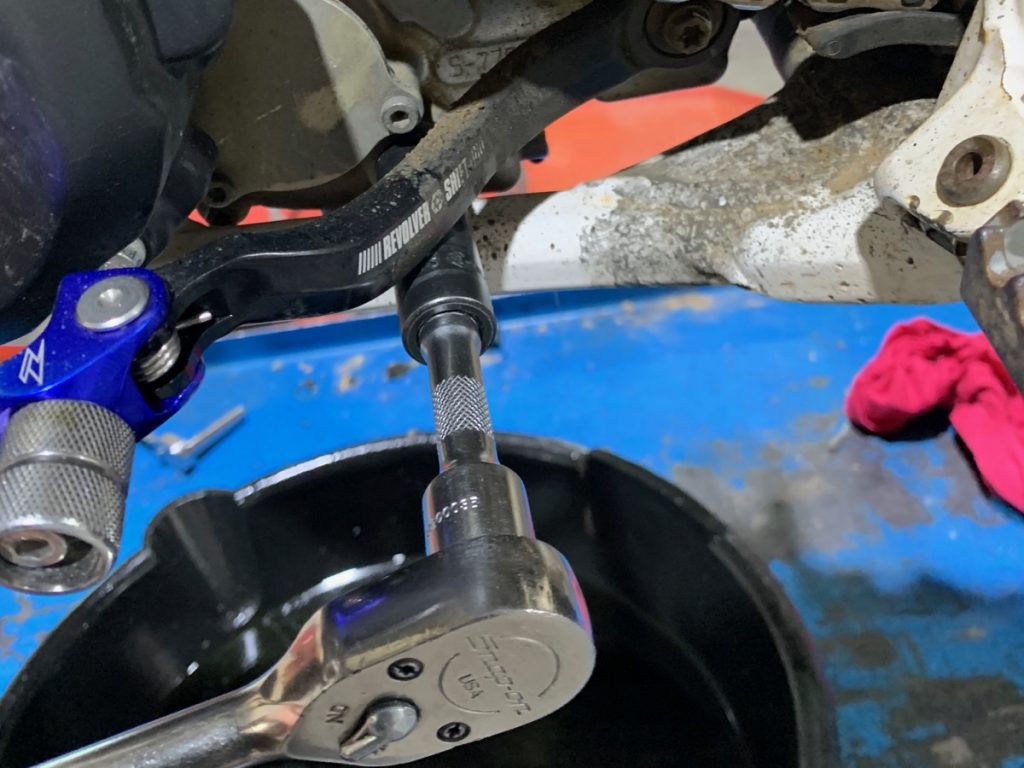
Behind this plug is an oil screen. Pull it out. You may need a screwdriver or long-nose pliers, but be gentle as it is only plastic.
6 FILTER
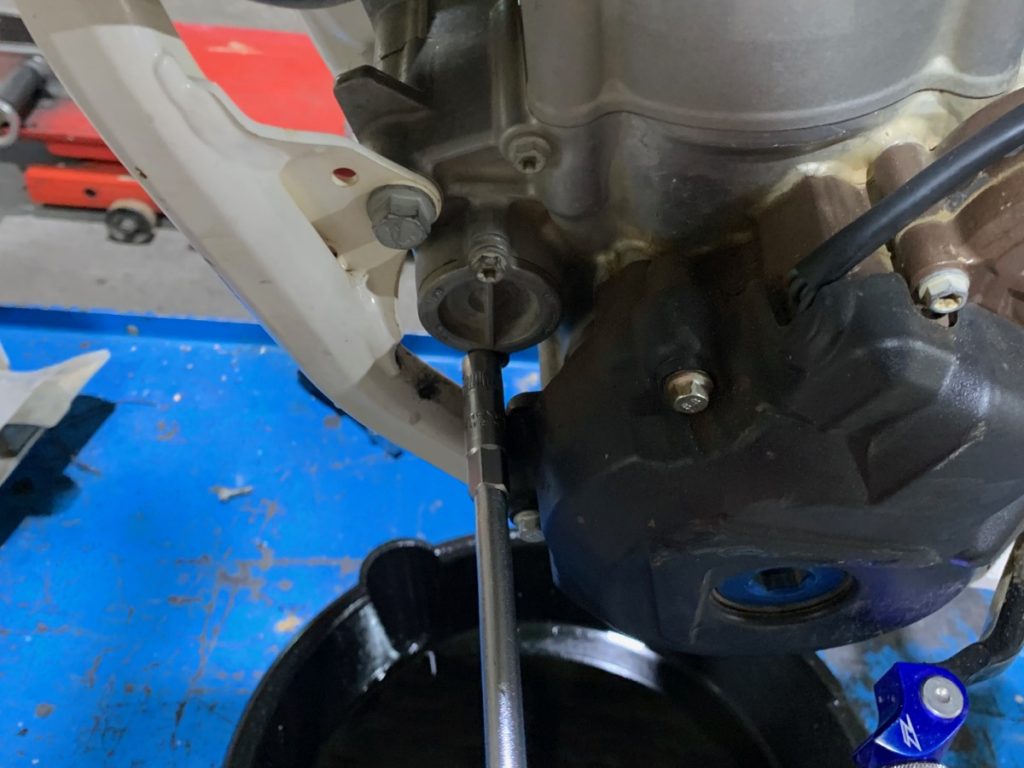
Next undo the 8mm bolts from the oil filter cover and remove the filter. This filter can be difficult to grab and pull out as it is a tight fit, so you may need pliers or a small screwdriver.
7 WASH PARTS
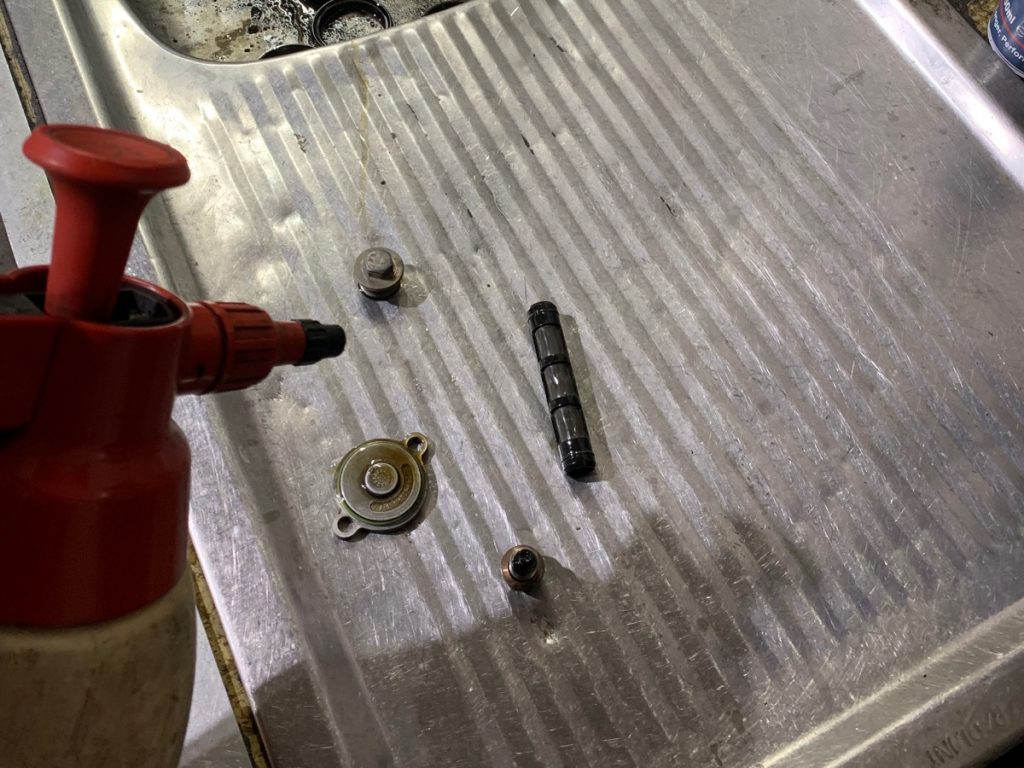
While the oil is draining, wash all the parts and then dry them. Fit new O-rings and washers and apply grease to the O-rings so they don’t pinch or tear on their way in.
8 CLEAN HOUSING

Give the inside of the oil filter housing a good clean and wipe it out with a clean rag to make sure there is no foreign material left in there.
9 NEW FILTER
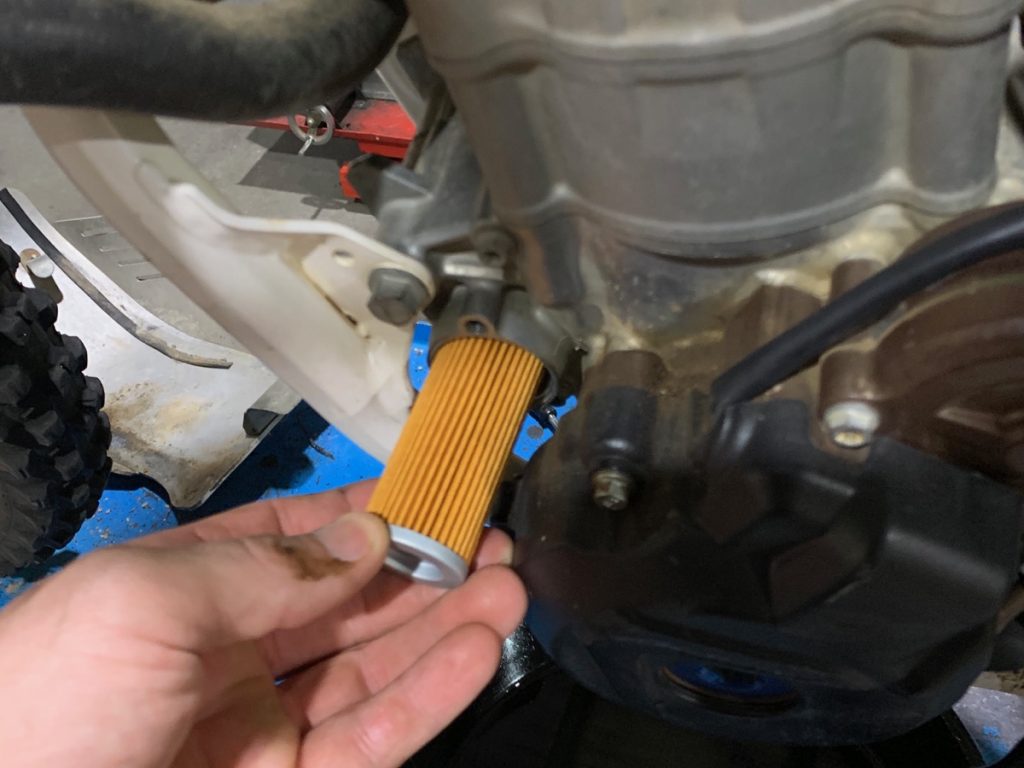
Fit the new oil filter and then fit and tighten the cover. Make sure that the rubber lip on the oil filter is facing inwards, as getting this wrong can cause catastrophic engine damage.
10 TIGHTEN PLUG
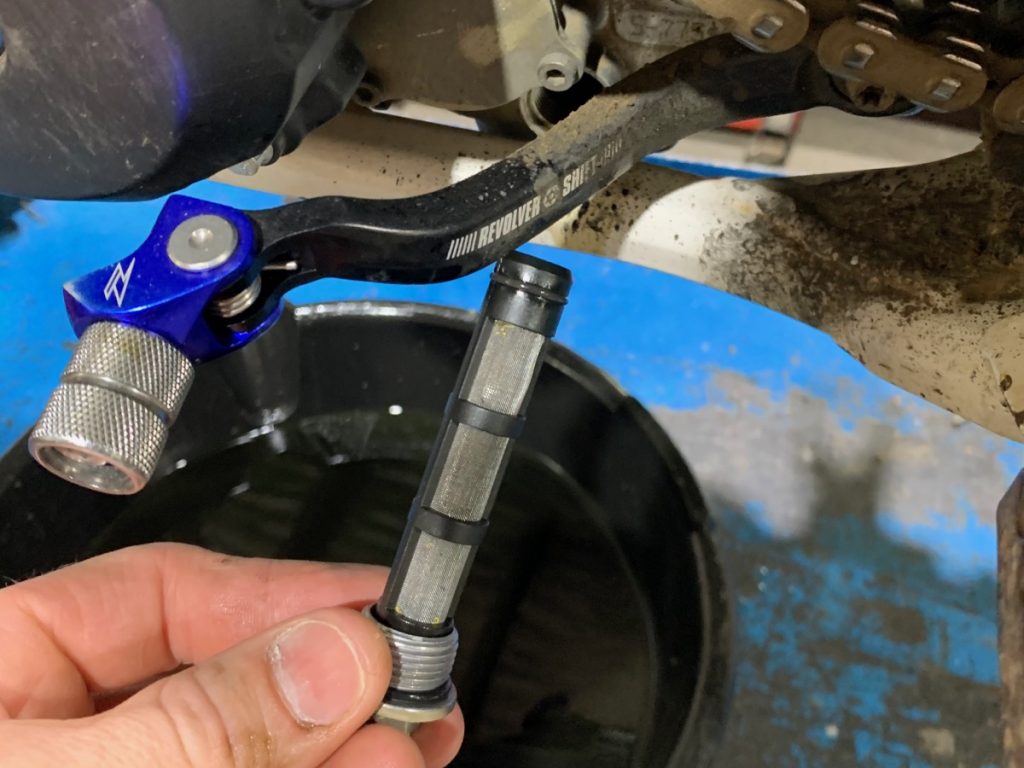
Gently tighten the sump plug and then refit the oil screen. Fit the screen by hand and do the cap up gently using your fingers to make sure it is seated correctly before tightening. This screen can easily get cocked sideways and damaged when tightening it.
11 FRESH OIL

Fill the engine with fresh oil. Make sure to use the grade and amount specified by the manufacturer, then tighten the filler cap.
12 WIPE DOWN ENGINE
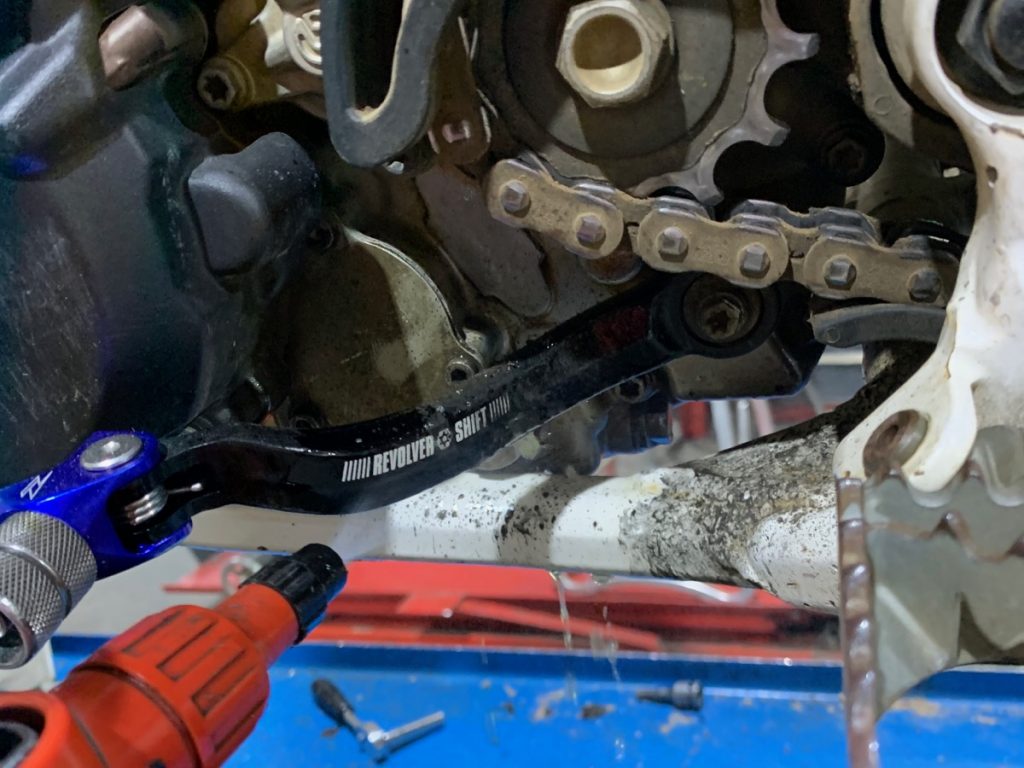
Clean any oil off the engine. If you do not do this, oil can drip off or collect dust and make it look like you’ve got an oil leak.
13 CHECK LEVEL
Start the engine and run it for a few minutes. Then turn the bike off and, after letting it sit for a minute, check the oil level and adjust as required. Check for leaks around the sump plug, filter and oil screen before refitting the skidplate.
Technical Editor Mat Boyd
HOW AN OIL FILTER WORKS
The oil pump moves the lubricant directly to the filter housing. The oil is forced under pressure through the filter before it returns to the engine to lubricate the moving parts. The surface of the filter is usually ribbed to create a larger surface area to catch foreign material. Filters can be made from paper and fibre or from a metal screen. The paper/fibre type is more widely used today as it is much better for filtering the oil. Oil filters need to be changed regularly as they can become blocked or clogged with junk which will in turn reduce the effectiveness of the lubrication system and can result in severe engine damage. If the filter is fitted backwards, it won’t clean the oil and/or it will block the flow of oil to the internal organs of our engine.
BEWARE
Fitting any of these parts incorrectly can result in oil leaks or loss of pressure, which can lead to serious engine damage or failure.
TIPS
Do’s
1 Always apply grease to the O-rings before fitting.
2 Replace the oil filter when changing the lubricant.
3 Always following the manufacturer’s recommendations when buying oil.
Don’ts
1 Over-tighten the sump plug.
2 Force any bolts or plugs that are tight or not turning properly.
3 Re-use copper sump plug washers, they are very cheap to replace.
